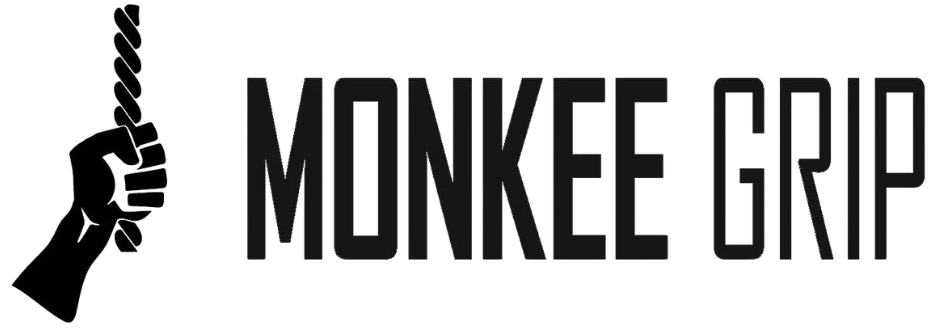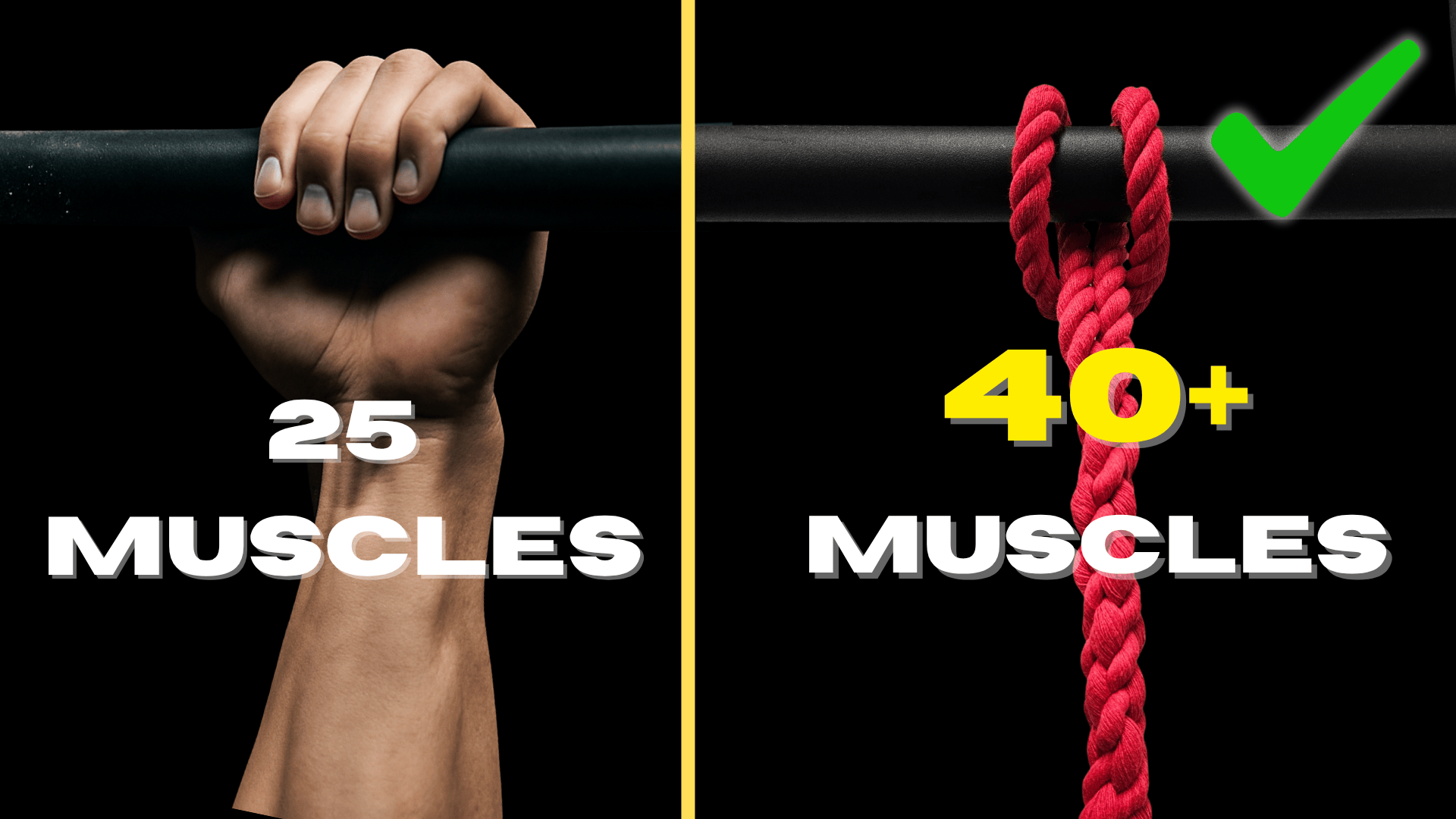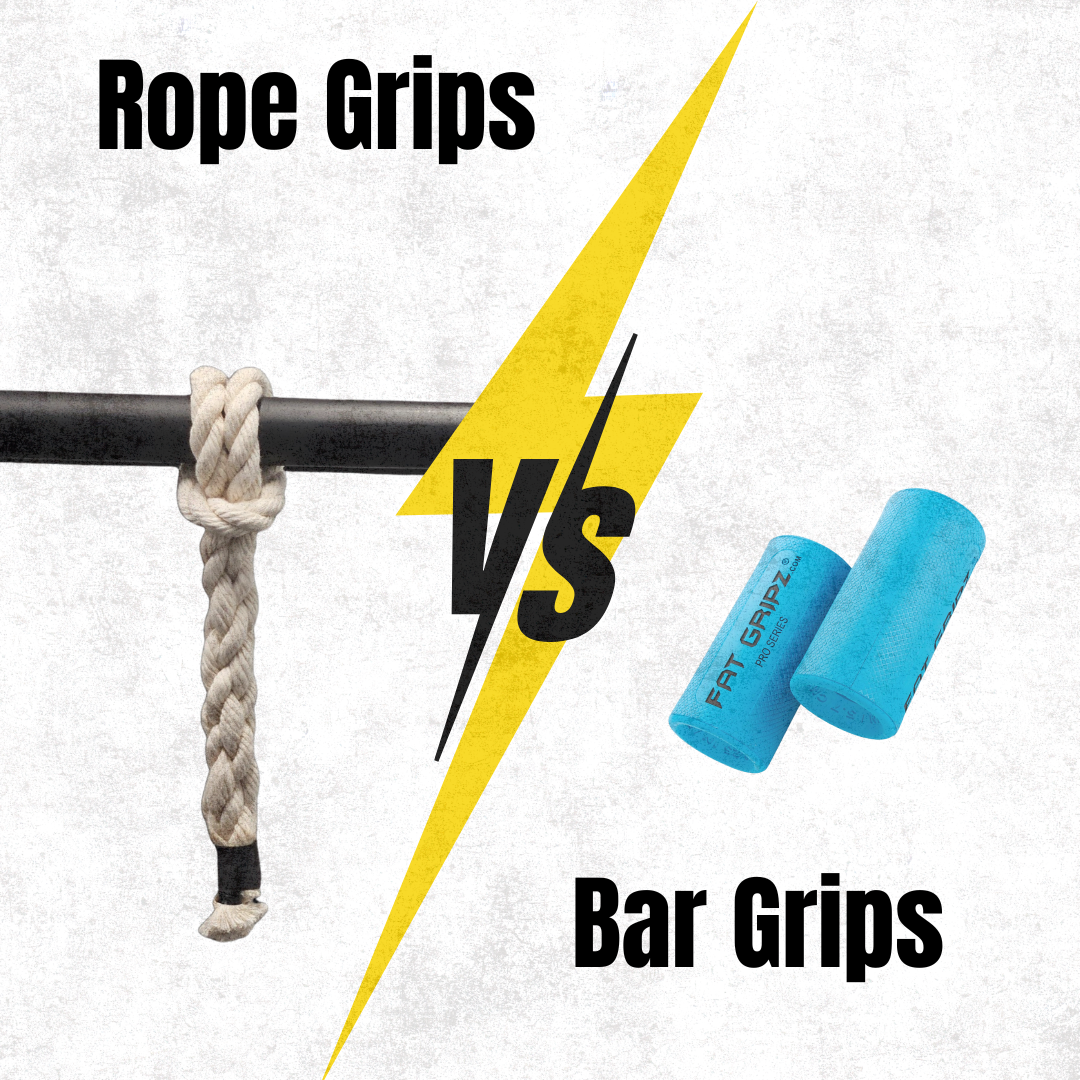The Ultimate Dead Hang Upgrade: Why Rope-Based Grips Build Real Grip Strength Faster
Introduction: The Most Underrated Grip Builder in the Gym
If there’s one movement that exposes weak hands, fragile tendons, and poor endurance — it’s the dead hang. Simple, brutal, and effective, dead hangs are the foundation of grip and shoulder health. They build strength from the fingertips to the spine. But like most classic exercises, they’ve been frozen in time — done the same way for decades, without evolution. That’s where rope-based grips come in. When you swap your static pull-up bar for a friction-based rope grip like Monkee Grips, the dead hang transforms from a passive endurance drill into a full-body stability challenge that builds real-world strength — faster.
Why Standard Dead Hangs Plateau
On a traditional pull-up bar, your hands rest on a flat, unchanging surface. Once your nervous system adapts, the movement becomes efficient — but not necessarily more effective. Your grip gets just strong enough to survive the set, and your stabilizers stop waking up. The bar does part of the work for you by offering stability. That’s great for beginners — but it’s also where most people’s grip gains stop. If your goal is raw, functional grip strength — the kind that lasts through fatigue, sweat, and chaos — then the static bar eventually becomes a ceiling, not a tool.
The Rope Grip Difference: From Static to Survival
Here’s the key difference between a bar and a rope: a rope never stops moving. When you hang from Monkee Grips, there’s no flat ledge for your palm to rest on. Your body has to create friction through constant squeezing, micro-adjustments, and stabilization. That constant instability triggers a neural survival response — your brain recruits extra muscles to keep you from falling. Suddenly, your grip isn’t just “holding.” It’s fighting. The result? More muscle recruitment in fingers, forearms, shoulders, and deep core stabilizers. Greater tendon strength as small connective tissues adapt faster under dynamic friction load. Improved control that translates directly to climbing, calisthenics, and sport performance. This is why rope-based dead hangs deliver faster, deeper grip development than any static bar variation.
The Science of Friction-Based Strength
Traditional grip tools train crush strength — the ability to squeeze and hold. Rope-based grips train functional tension — the ability to apply force while constantly resisting slippage and rotation. That difference is massive. When you train friction-based grip, you build endurance strength, not just peak force. You strengthen stabilizer and tendon chains instead of isolating large muscles. You enhance neuromuscular coordination, teaching your body to stay composed under load. This is the same principle elite climbers, tactical athletes, and OCR competitors rely on. And it’s exactly what Monkee Grips bring to your home gym — without the need for a full rope rig or complex setup.
Why Monkee Grips Work Better Than Anything Else
Monkee Grips aren’t just ropes — they’re engineered friction trainers. They attach using a cow hitch (girth hitch) knot, locking securely onto any bar, dumbbell, or cable station so they cannot slip off during use. That means you can safely hang, pull, or carry with 100% confidence. Each grip is built from premium rope and heat-shrunk for maximum durability and comfort. The rope flexes under tension, forcing your hand to adapt in real time — exactly like holding onto a rope climb, a hockey stick, or a heavy sandbag. In short: you can train anywhere, turn any exercise into a grip challenge, and build stronger hands without adding complexity. This is friction-based grip training made simple, safe, and scalable.
How to Train Dead Hangs with Monkee Grips
Start small. The goal isn’t to max out time — it’s to build control and tendon endurance.
Level 1: Assisted Dead Hangs — Use a resistance band or place one foot on a box. Hang for 20–30 seconds. Focus on smooth breathing and active shoulders.
Level 2: Full Bodyweight Hangs — Once you can hang unassisted for 20–30 seconds, progress to full hangs. Keep tension through your core and grip the ropes like you’re trying to pull them through your hands.
Level 3: Weighted Dead Hangs — Add a dip belt or backpack for resistance. This accelerates forearm and tendon adaptation.
Level 4: Single-Arm Alternating Hangs — Shift weight between hands or hold with one arm for short bursts. This is advanced — and humbling. Perform 2–3 sets per week for rapid gains.
The Results You’ll Feel
After two weeks of Monkee Grip dead hangs, most athletes report noticeably longer hold times, stronger wrists and forearms during pull-ups and carries, reduced shoulder discomfort due to improved scapular control, and faster recovery with better grip endurance in all pulling movements. It’s not magic — it’s physics. The more your grip has to fight for control, the stronger it becomes.
The Takeaway
Dead hangs are one of the most efficient, minimalist exercises on the planet — but the standard bar version is just the beginning. By switching to a rope-based grip like Monkee Grips, you multiply your muscle recruitment, tendon activation, and real-world strength development without adding a single extra rep. If you’re ready to turn your dead hangs into a full-body challenge that builds hands of iron and forearms that don’t quit:
🦍 Train smarter. Build stronger.
👉 www.monkeegrip.com






Leave a comment
This site is protected by hCaptcha and the hCaptcha Privacy Policy and Terms of Service apply.